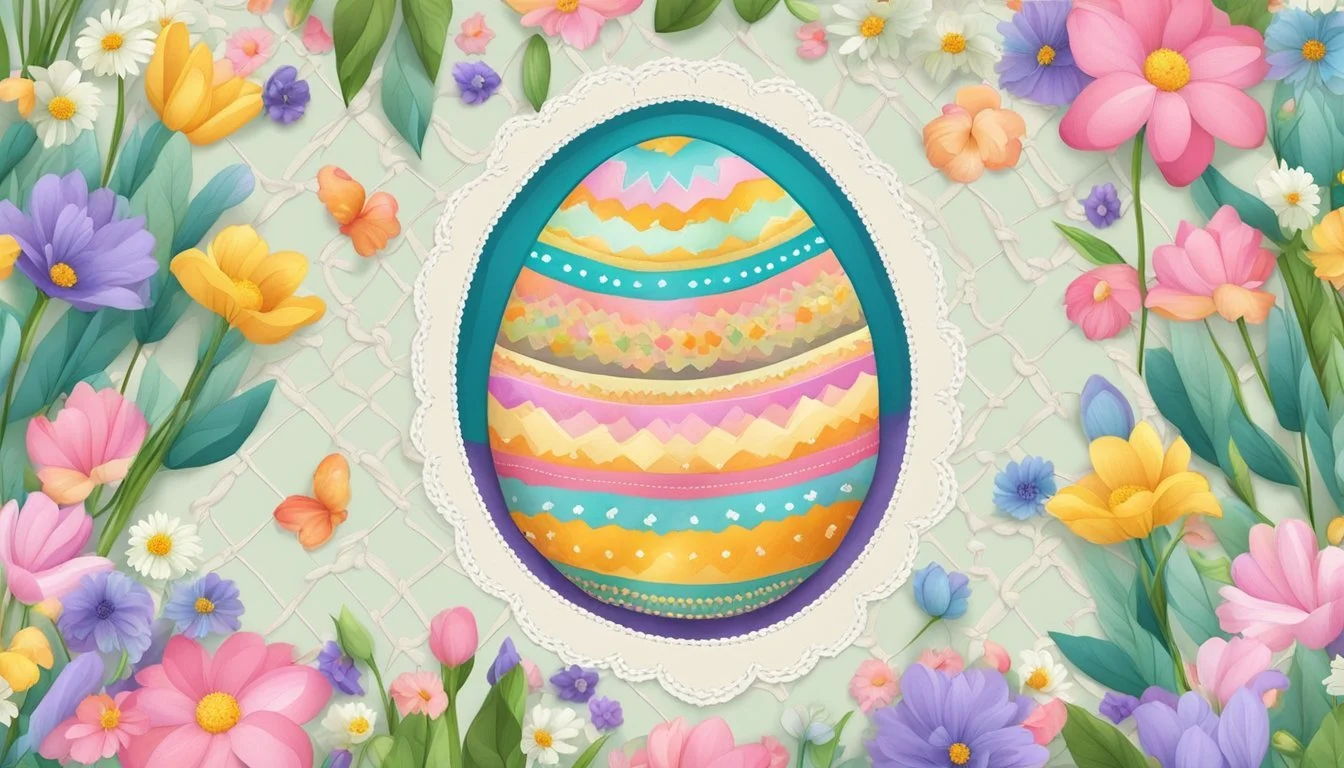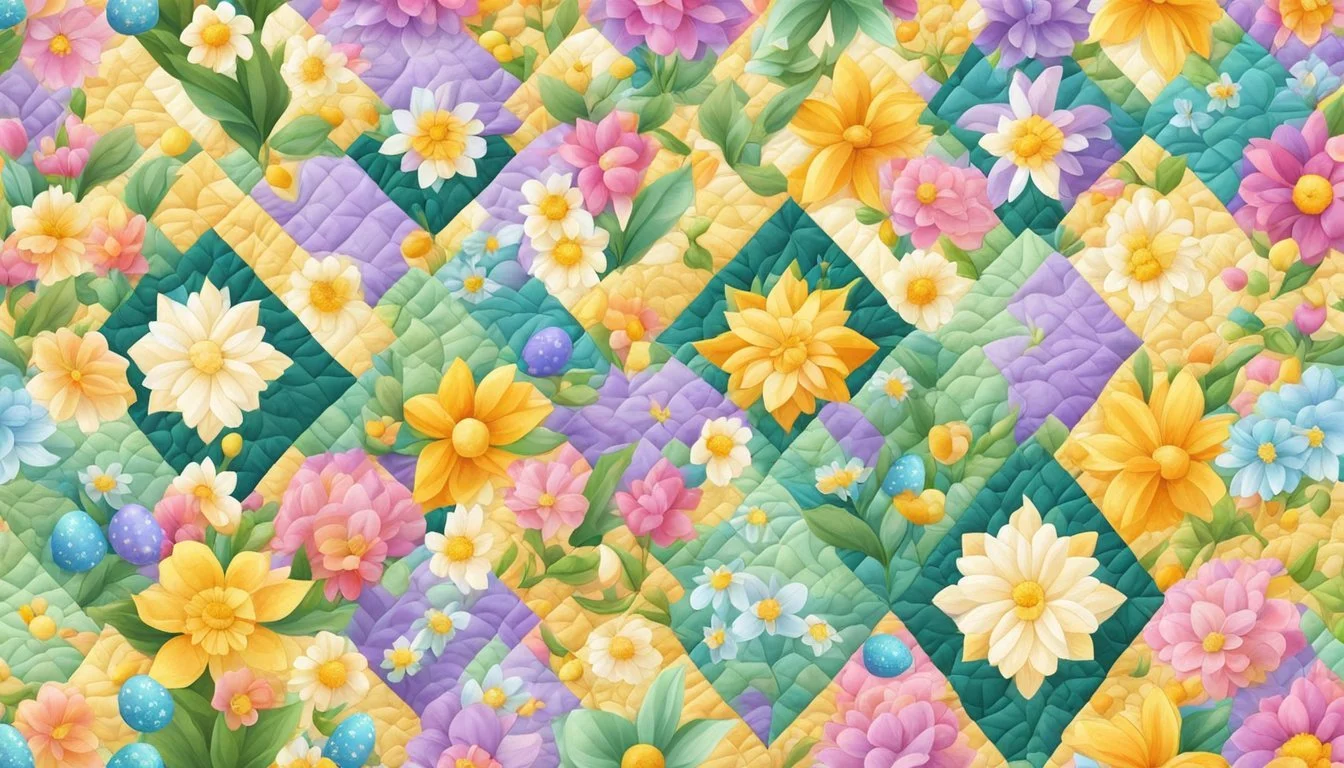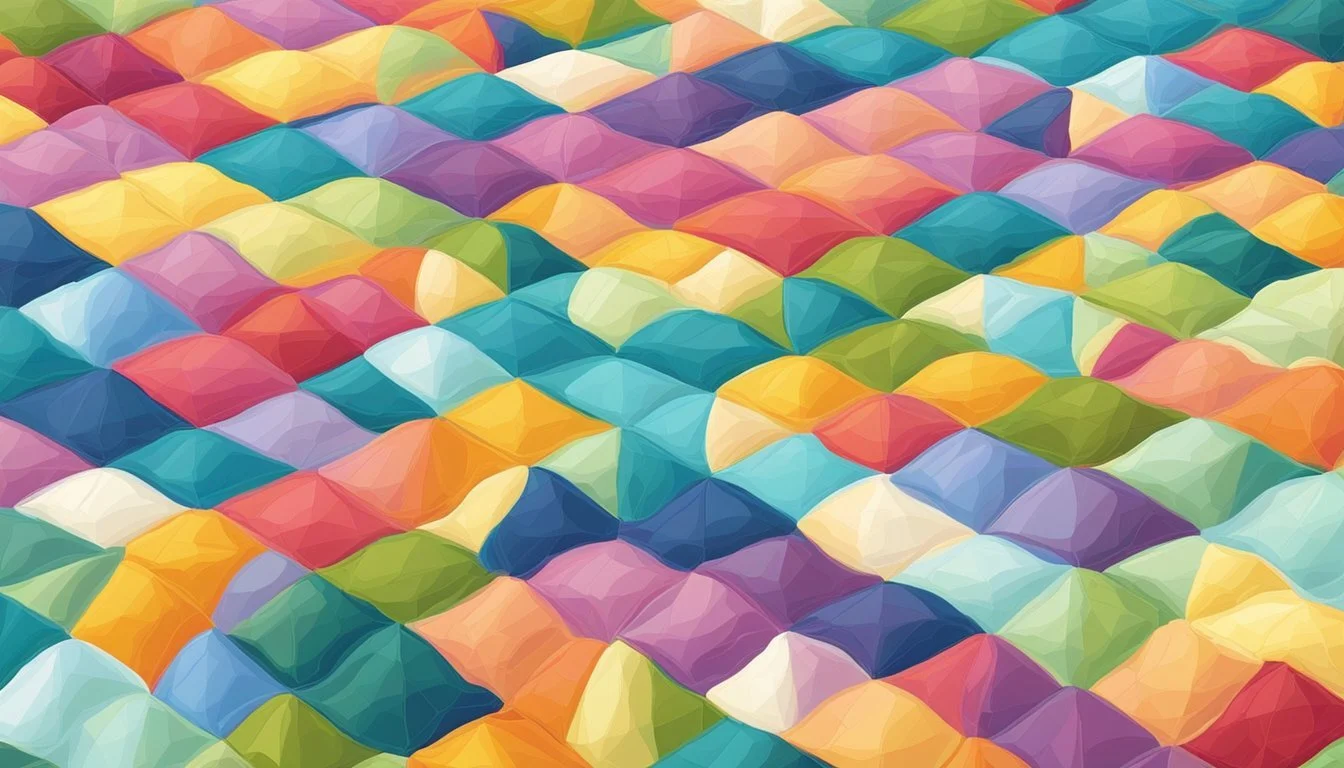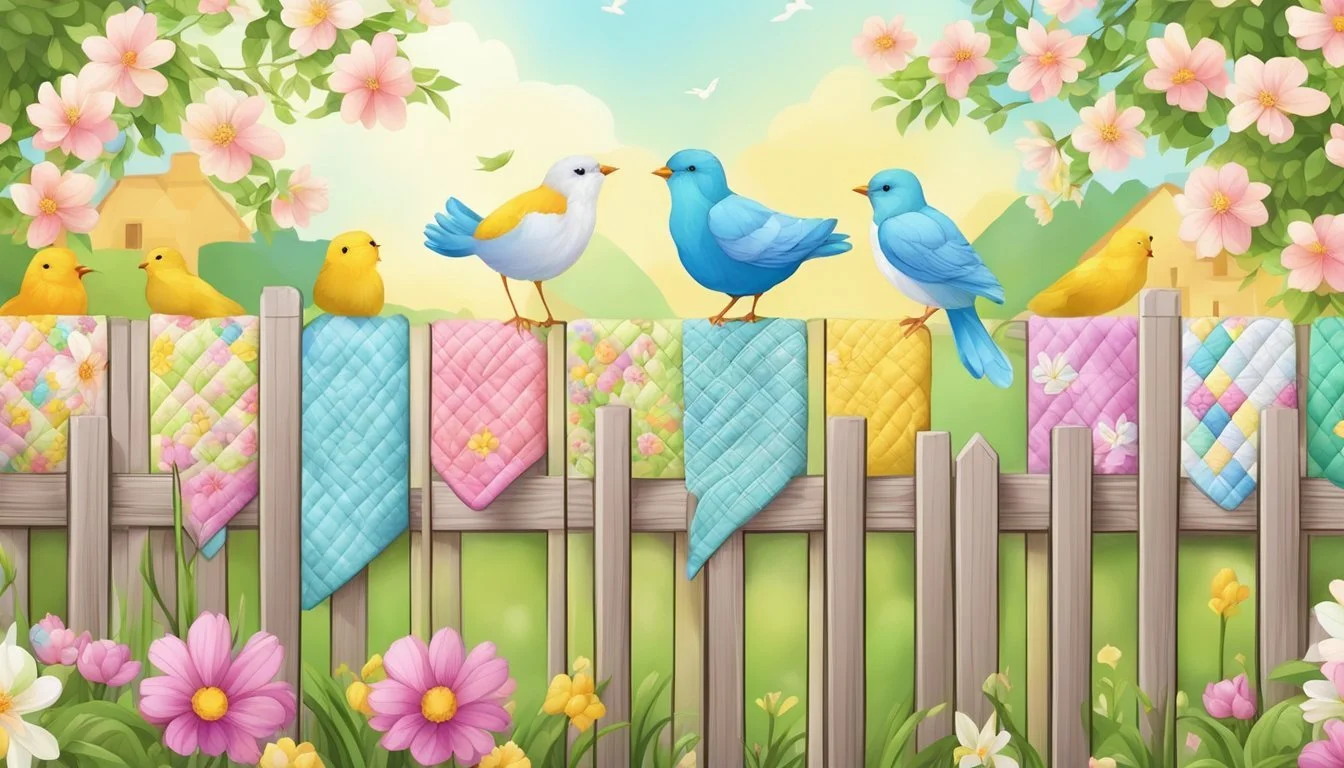Easter and Quilting
Stitching Together Memories with Seasonal Crafts
The arrival of Easter ushers in a time of vibrant colors, renewal, and the celebration of spring. In the heart of these festivities, quilting emerges as a cherished activity that combines the joy of the season with the creation of lasting memories. Quilts, with their intricate patterns and cozy warmth, become vessels of tradition and storytelling. They are as much a part of Easter as the eggs and the bunny, representing family heritage and the passage of skills from one generation to the next.
Quilting for Easter offers an opportunity to craft something unique that encapsulates the essence of the season. Patterns featuring spring motifs such as bunnies, chicks, and tulips are commonly sought after, bringing the lively spirit of spring into the home. These handmade treasures, sewn with patience and care, become centerpieces for Easter gatherings and decorations that are revisited each year with fondness.
Through the art of quilting, Easter memories are stitched together in a tangible form. Each quilt can tell a story of past celebrations, of the hands that have worked on it, and the communal joy shared around it. Whether one opts for simple patchwork designs for a quick project or more elaborate appliqués and piecing, every quilt becomes a keepsake, merging the warmth of family memories with the cheerful spirit of the holiday.
The Interplay of Quilting And Easter
Quilting during Easter merges the delight of spring with the profound meaning of the holiday. It's a time when the colorful vibrancy of spring and the rich traditions of Easter coalesce into patterns and stitches.
Historical Significance
The history of quilting during Easter ties back to the need for warmth and the tradition of storytelling through fabric. Quilts have been a practical home staple, but during holidays like Easter, they assume a more celebratory role. Historically, preparing an Easter quilt would have been part of ushering in the joy and renewal of spring. Quilters might have included motifs like easter eggs, easter bunny, and flowers to reflect the season's essence and the holiday's themes.
Symbolism in Patterns
The symbolism woven into Easter quilts can be as diverse as the quilters themselves, each piece reflecting personal and cultural narratives.
Easter Bunny: A staple of Easter iconography representing new life and joy.
Easter Eggs: Often found in quilt patterns, symbolizing rebirth and new beginnings.
Flowers: Especially spring flowers, are a celebratory nod to nature's awakening and are commonly used designs in Easter quilts.
Through each stitch and choice of fabric, quilters tell a story — a narrative of rejuvenation, festivity, and the historical roots of Easter. Each quilt becomes a tactile expression of the season and its meanings, cherished as both practical items and works of art.
Fundamentals of Easter Quilting
In the crafting of Easter quilts, the selection of appropriate fabrics, the usage of proper tools, and the choice of festive patterns are paramount to creating memory-laden pieces.
Choosing the Right Fabric
Selecting the right fabric is crucial for the overall look and feel of an Easter quilt. Cotton is often the preferred choice due to its breathability, softness, and ease of handling. When contemplating an Easter-themed quilt, one should consider using pastel or vibrant spring colors and patterns featuring motifs such as bunnies, chicks, and eggs. Fabrics should not only resonate with the Easter theme but also ensure quality and durability.
Pastel or bright spring colors
Easter motifs (bunnies, chicks, eggs)
High-quality cotton fabric
Essential Quilting Tools
Quilters require a set of essential tools to execute precise cuts and stitches. A rotary cutter and a self-healing cutting mat are indispensable for cutting fabric pieces accurately. Additionally, an iron and an ironing board are necessary to press fabrics flat, which is a critical step in piecing and finishing a quilt. Batting, the layer of insulation between fabrics, should be compatible with the chosen fabrics to give the quilt its desired warmth and thickness.
Rotary cutter & self-healing cutting mat
Iron & ironing board
Compatible batting
Selecting Easter Patterns
Patterns imbue a quilt with seasonal charm, and for Easter quilting, specific patterns enhance the festive theme. Simple patchwork patterns with bunny or chick prints are a beginner-friendly option. For more advanced quilters, applications or intricate piecing that includes tulips, hearts, and pinwheel blocks could be appealing. When choosing a pattern, it's important that it reflects the spirit of Easter while aligning with the quilter's skill level.
Simple patchwork (bunny or chick prints)
Advanced appliqué (tulips, hearts, pinwheel blocks)
Alignment with quilter's skill level
Creating Easter-Themed Projects
Easter quilting and sewing projects provide a vibrant and heartfelt way to decorate for the holiday. These crafts add a personal touch to celebrations, enabling enthusiasts to showcase their love for both the season and the art of quilting.
Easter Baskets and Gift Bags
Quilters can stitch Easter baskets and gift bags that hold sweets and treats with a personal touch. Patterns often include spring motifs like eggs, carrots, and flowers. A popular choice for baskets might be featuring appliquéd bunnies or pieced blocks, whereas gift bags can have simpler designs incorporating pastel fabrics and ribbon closures.
Table Toppers and Napkins
Creating table toppers and napkins melds utility with festivity, setting the stage for a holiday meal. A table topper might have a central Easter motif, such as a bunny or a basket, surrounded by a border of pastel patchwork. Coordinated napkins can use fabric with printed Easter eggs or spring scenes, often finished with a contrasting edge stitch.
Easter Decorations
Easter-themed decorations encompass a wide range of projects, from wall hangings to stuffed plush toys. Wall quilts might showcase a center medallion of tulips or an Easter egg finished with a complementary border. Other decor items might include fabric Easter eggs to place in a basket or spring-themed pillow covers to accent the home.
Techniques And Stitch Patterns
In the realm of Easter quilting, mastery of stitching techniques as well as applique and embroidery is essential. Quilters use diverse stitches to assemble quilt tops and add decorative elements, creating lasting Easter memories through their fabric artistry.
Stitching Techniques
Quilting stitches hold the three layers of a quilt—the quilt top, batting, and backing—together. These stitches come in various forms and the quilters' choice depends on the desired aesthetic and the project's needs.
Hand Stitching: Many quilters prefer hand stitching for its traditional appeal and the personalized touch it grants a quilt. While it's more time-consuming, it allows for greater control and a connection to the quilting process. Typical hand stitches include the running stitch and the backstitch.
Machine Stitching: For those who seek efficiency and uniformity, machine stitching is the method of choice. Modern machines offer a multitude of stitch options and can handle intricate patterns. Straight stitch and zigzag stitch are commonly used machine stitches.
Applique and Embroidery
The art of applique and embroidery adds depth and character to quilted projects, especially those celebrating Easter with its vibrant themes.
Applique: This technique involves sewing smaller pieces of fabric onto a larger background to form patterns or pictures. For Easter quilts, applique might feature motifs like bunnies, eggs, or flowers. It requires precision and can be done by hand or machine.
Hand Applique: Utilizes small, invisible stitches to secure the edges of the fabric pieces.
Machine Applique: Offers a quicker method with options like the satin stitch or blanket stitch to encase the edges.
Embroidery: Embellishments with embroidery elevate the quilt's design through added texture and color contrast. Hand embroidery can include intricate stitches such as the French knot or cross-stitch, often used to accentuate Easter themes.
Hand Embroidery: It involves decorative stitching by hand, which can include a variety of stitches like stem stitch, chain stitch, or satin stitch, for detailing.
Machine Embroidery: Modern embroidery machines can replicate hand-embroidered looks quickly and with high precision.
Quilting As A Creative Outlet
Quilting, an age-old art form, serves as a riveting intersection where tactile craft converges with boundless creativity. This harmonious blend presents quilters with a platform to express sentiment and narrate stories through fabric and thread.
Blending Art And Craft
Quilting stands out as an exemplary way to meld practical craft with visual artistry. Each quilt is a canvas upon which a quilter stitches together a spectrum of textures, colors, and patterns, transforming simple materials into a compelling piece of art. The quilter's personal touch turns fabric into a language of its own, speaking volumes about their artistic vision.
Textures: Utilizing a variety of fabrics, from smooth cotton to plush velvet, quilters can play with tactile contrasts.
Colors: A carefully curated color palette can convey moods and seasons, from the pastel hues of spring to the rich tones that tell autumn's tale.
Patterns: Patterns range from geometric precision to free-form improvisation, each holding potential to communicate styles and themes.
Sharing Love Through Quilt Making
Quilts often become physical embodiments of love and care. A handmade quilt is not merely a gift; it's a narrative of devotion, meticulously crafted, often intended for family members or friends. It's a warm, enveloping symbol of the quilter's invested time and thought, connecting lives amidst the threads.
For Family: Celebratory quilts for new babies, wedding anniversaries, or milestone birthdays.
For Friends: Comfort quilts for friends in need or memory quilts that hold shared experiences.
Across Generations: Heirlooms that carry personal stories and heritage through generations, becoming treasured keepsakes.
Creating a quilt is an ambitious endeavor that allows the quilter to inflect a piece of themselves into their work, offering comfort and joy to the recipients and cultivating loving memories that endure.
Quilting Tutorials And Examples
Quilting is an activity that combines creativity with technique to produce pieces full of tradition and personal touch. This section provides an overview of the process with step-by-step instructions and pattern examples from Ellis & Higgs.
Step-By-Step Quilt Making
Materials Required:
Fabric in assorted prints
Quilting thread
Batting
Quilting needle or sewing machine
Quilting ruler, rotary cutter, and mat
Instructions:
Select a pattern: Choose a quilt pattern that suits your skill level and the occasion.
Cut your fabric: Using your quilting ruler and rotary cutter, cut your fabric into the required pieces.
Piece together the quilt top: Lay out your cut fabric pieces per the pattern's instructions and sew them together.
Create the quilt sandwich: Place the backing fabric on a flat surface, layer the batting on top, and then lay the quilt top over.
Quilt the layers: Sew all three layers together by hand or using a machine.
Bind the quilt: Attach a strip of fabric around the quilt edges to finish the project.
Ellis & Higgs Pattern Examples
Bunny Mini Quilt: A charming quilt that features adorable bunnies, which is perfect for Easter. The pattern is accessible to quilters of different skill levels.
Springtime Quilt Patterns: Ellis & Higgs offer a variety of spring-themed quilt patterns that often include elements like flowers and animals, reflecting the joy of the season.
Using an Ellis & Higgs pattern, quilters can create memorable and seasonally appropriate quilts for Easter, Spring, or any other occasion. Their patterns are meticulous and provide clear instructions, ensuring quilters can follow along with confidence and ease.
Accessorizing For The Easter Parade
Easter parades provide the perfect opportunity for quilt lovers and sewing enthusiasts to showcase their handmade accessories. A carefully crafted quilt or accessory can become a treasured element of Easter attire and add a personal touch to the celebration.
Dressing Up with Easter Quilts
For many, the Easter parade is more than just a procession; it's a chance to display wearable art. Quilted vests and shawls serve as functional yet decorative attire that can keep participants warm during a brisk spring morning. They can feature traditional Easter motifs, such as bunnies, carrots, and eggs, interwoven into the fabric to capture the essence of the holiday. To ensure harmony between the quilted accessories and the outfits, one might choose a color palette that complements their dress or suit, incorporating pastels or floral patterns that are synonymous with Easter and springtime.
Easter Quilted Item Fabric Pattern Outfit Match Quilted Vest Pastel Pinwheels White Easter Dress Quilted Shawl Bunny & Carrot Light Blue Suit Quilted Tote Floral Pink Sundress
Matching Accessories and Attire
Coordinated ensemble can elevate the festive spirit of the event. Custom-made Easter bonnets embroidered with quilted patches can match a dress or a child’s waistcoat in both color and theme. Fabric brooches or lapel pins designed with miniature quilt blocks offer a subtle yet elegant touch, complementing an outfit without overpowering it. To complete the look, one could also craft quilted clutch purses or slip-on fabric shoe covers to pair with their attire, ensuring every piece plays a part in the parade’s exuberance.
Bonnet Embellishments:
Quilted flowers
Miniature Easter eggs
Appliqué butterflies
Brooches and Pins:
Tiny floral quilt squares
Soft pastel fabric pieces
Footwear Accessories:
Matching quilted shoe covers
Easter-themed fabric anklets
By integrating the artistry of quilting with Easter parade apparel, one creates a cohesive and charming presentation that celebrates both the holiday and the craft.
Quilt Care And Maintenance
Proper care and maintenance are critical for preserving the beauty and longevity of a quilt. They ensure that the quilt top remains vibrant and the craftsmanship endures through the years, even with regular use.
Cleaning and Storage
Cleaning: The quilt should be washed sparingly and with great care. It's best to wash a quilt only when it is truly soiled. If warm water is necessary, it should be used moderately. A gentle, dye-free detergent is recommended. Hand washing is preferable, but a washing machine can be used on a gentle cycle with a low-spin setting.
Drying: Air drying is the safest method. Lay the quilt flat on a clean, dry surface out of direct sunlight to avoid fading. If using a dryer, use a low or no-heat setting.
Storage: To store a quilt, one should:
Choose a cool, dry place with no direct sunlight.
Avoid plastic bags. Instead, use cotton sheets or pillowcases for encapsulation.
Refrain from folding the quilt into sharp creases. Roll it around a tube wrapped in acid-free paper or fabric.
Every few months, refold the quilt to prevent permanent creasing.
Repair and Restoration
Repair: Address minor damage immediately to prevent further deterioration. For rips or tears in the quilt top, one can use appliqué techniques or patchwork for a more seamless repair. Matching thread and fabric should be used to maintain the quilt's appearance.
Restoration: Extensive damage may require professional restoration services. They have the expertise to replace worn fabric, restitch separated seams, and re-quilt sections if necessary. This requires a skilled hand to ensure the quilt's integrity isn't compromised, matching patterns and thread color as closely as possible.
Regular assessments for damage will help keep the quilt in prime condition, making it a warm and cherished item for years to come.
Conclusion
Quilters often focus on creating keepsakes that blend tradition with personal touch. Sewing machines hum steadily as they intertwine fabrics and memories, yielding tactile stories. With Easter as a backdrop, the fabrics selected could echo the vibrant hues associated with the holiday—from the soft pastels of eggs to the vivid greens of new beginnings.
Project Details:
Themes: Incorporating elements like animals and candy into quilt patterns reflects the joyous spirit of Easter.
Techniques: Rows of intricate patterns can be achieved effortlessly with a good-quality sewing machine, which ensures durable seams and crisp designs.
Materials to Consider:
T-Shirts: Re-purposing beloved t-shirts can add a layer of nostalgia, crafting a narrative out of commonplace garments.
Fabrics: Thematic prints featuring animals, such as bunnies and chicks, can be used to create a playful quilt that also serves as a festive decoration.
In the hands of a quilter, materials transform. Stitches become chronicles of family gatherings, with every seam reinforcing bonds and every pattern reflecting shared experiences. Quilts not only provide warmth but also perpetuate family heritage, one square at a time. As these fabric masterpieces drape over a couch or adorn a table during Easter festivities, they become a conduit for storytelling, prompting the sharing of memories and the making of new ones.






